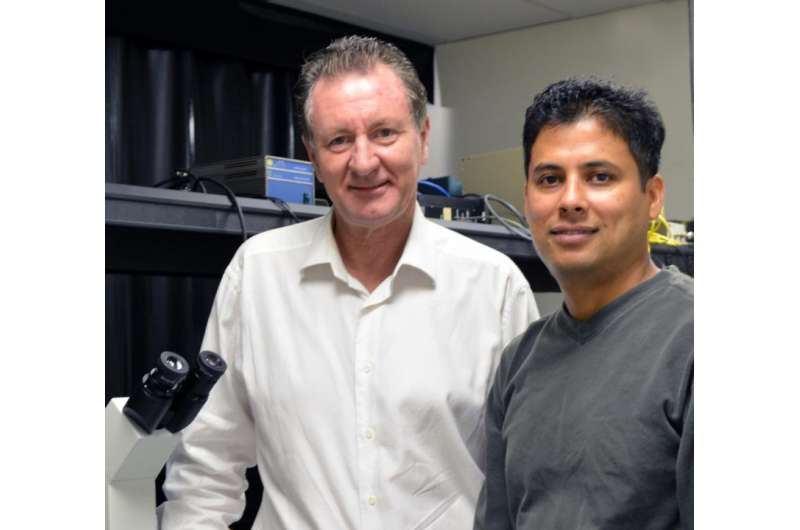Scientists show how drug molecules regulate a medically important protein

A new study, led by scientists at The Scripps Research Institute (TSRI), shows how different pharmaceutical drugs hit either the "on" or "off" switch of a signaling protein linked to asthma, obesity and type 2 diabetes.
"The long-term goal is to use this knowledge to help discover new drugs," said TSRI Professor David Millar, senior author of the study.
The study, published recently in the journal Proceedings of the National Academy of Sciences, was a close collaboration between the Millar laboratory; the laboratory of Nobel Laureate Kurt Wüthrich, Cecil H. and Ida M. Green Professor of Structural Biology at TSRI; and the laboratory of Raymond C. Stevens, formerly of TSRI and now Provost Professor of Biological Sciences and Chemistry and director of The Bridge Institute at the University of Southern California (USC).
Crucial to Disease
The researchers focused on the β2 adrenergic receptor (β2AR), a protein that sits on the cell membrane, where it binds external molecules and sends signals to the inside of the cell. β2AR belongs to a class of proteins called G protein-coupled receptors (GPCRs). There are more than 800 known human GPCRs, and they are linked to conditions from heart disease to Parkinson's disease and Huntington's. β2AR is known to play a role in asthma, obesity and type 2 diabetes.
In fact, GPCRs are so crucial to disease that more than 35 percent of pharmaceuticals target these receptors.
In previous studies, scientists used a method called x-ray crystallography to catch "snapshots" of β2AR in its active and inactive forms. Although the static images provided insight into the protein's structure, the scientists couldn't show how frequently the receptor activated or how different drug molecules governed the time spent in each state.
"We wanted to go in-depth and look at the dynamics of this receptor in molecular detail using state-of-the-art single-molecule techniques," said Rajan Lamichhane, research associate at TSRI and co-first author of the new study with Jeffrey J. Liu of the Max Planck Institute of Biochemistry (formerly of TSRI).
Surprise Findings
In the new study, the scientists incorporated β2AR in "nanodiscs," small particles that mimic the native cell membrane but contain only a single receptor molecule. They tagged a section of the receptor with a fluorescent probe and monitored the fluorescence intensity over time in a sophisticated microscope system. The probe lit up when the receptor was inactive and went dim when active, giving the researchers a way to track activation in real time.
The researchers tested β2AR reactions to formoterol, an anti-asthma drug known as an "agonist," or activator, of β2AR signaling, and to the drug ICI 118,551, an inverse agonist known to suppress signaling.
The probe's flickering revealed several crucial details about β2AR. First, the researchers found that the receptor naturally fluctuates between its active and inactive states in the absence of any drug—a phenomenon scientists had always suspected but had not been able to prove directly. Tracking the behavior of individual receptor molecules revealed these fluctuations for the first time and established how long the receptor stays in each state. Second, the presence of formoterol doesn't just activate β2AR faster—it also stops β2AR from deactivating as quickly.
"That was a surprise," said Millar, describing formoterol's "twin" functions.
The researchers also saw that ICI 118,551 caused β2AR to deactivate more rapidly. Together, the findings explain why β2AR exhibits some signaling activity even in the absence of any drug molecules and why different drugs can either stimulate or inhibit signaling.
With the new single-molecule fluorescence technology in hand, the researchers said the next step is to find molecules that spark the same behavior as formoterol and ICI 118,551—perhaps molecules that could work on different GPCRs to affect different diseases.
More information: Single-molecule view of basal activity and activation mechanisms of the G protein-coupled receptor β2AR, Proceedings of the National Academy of Sciences, dx.doi.org/10.1073/pnas.151962611
















